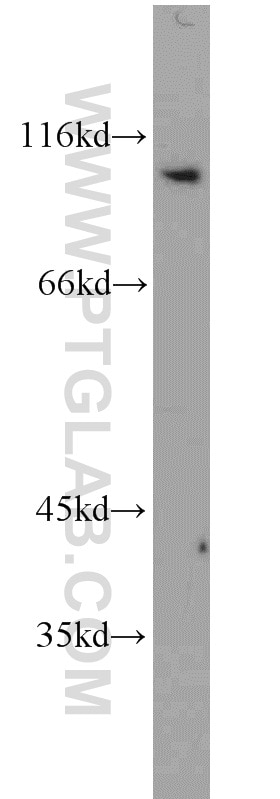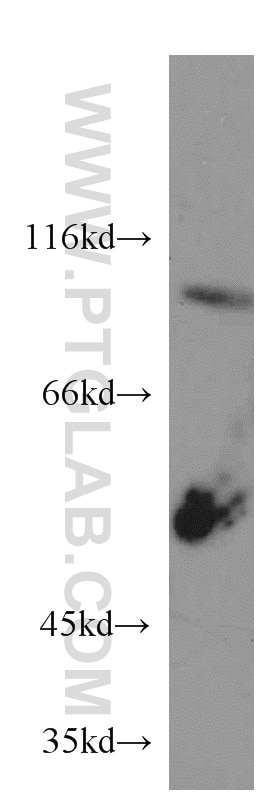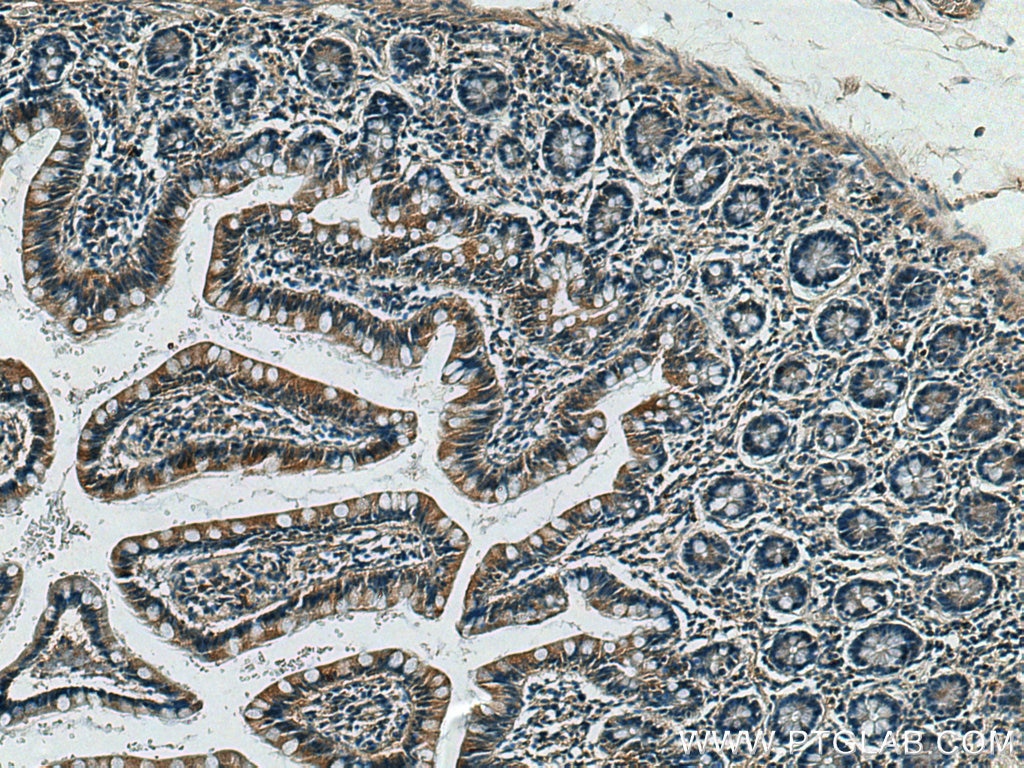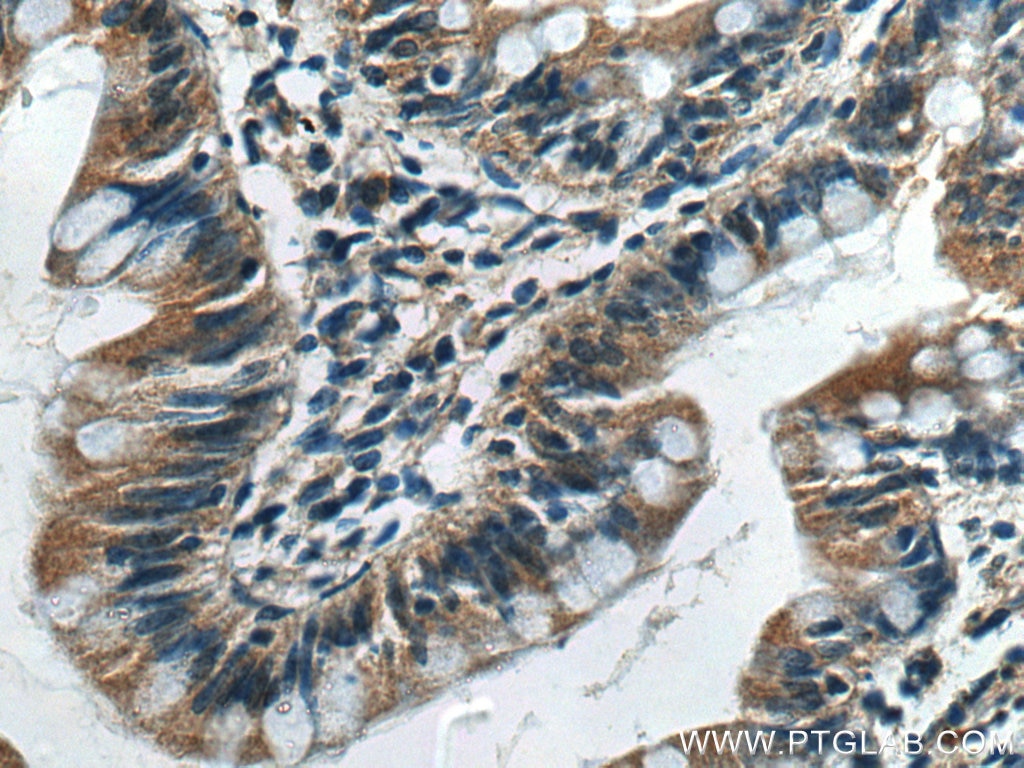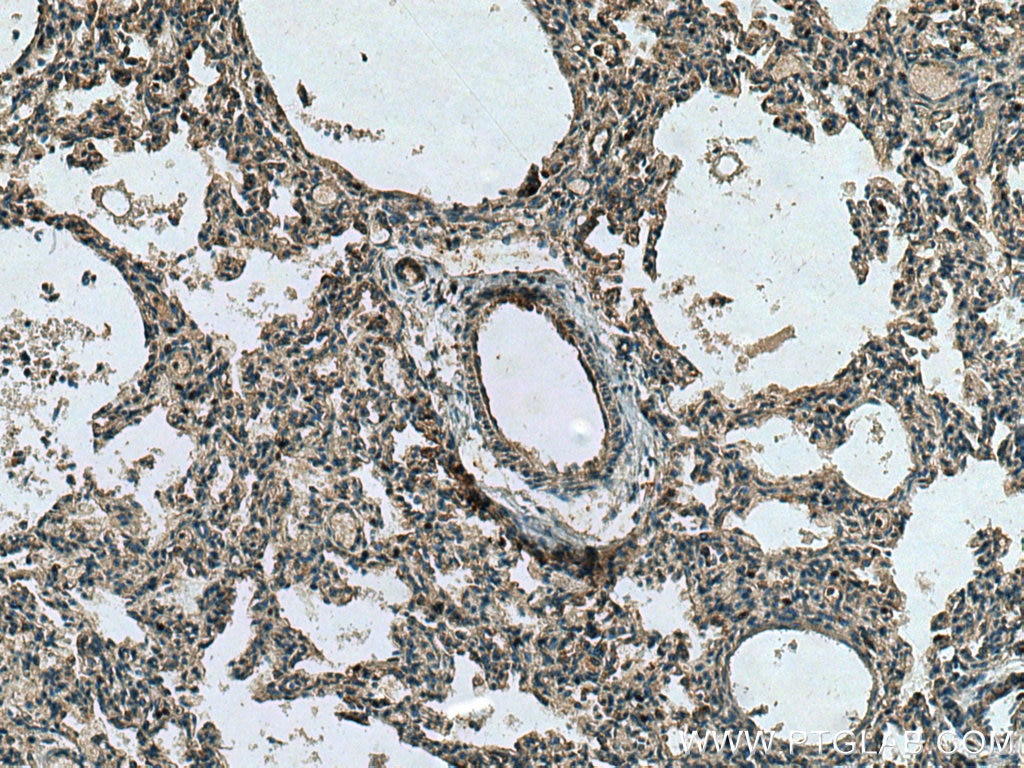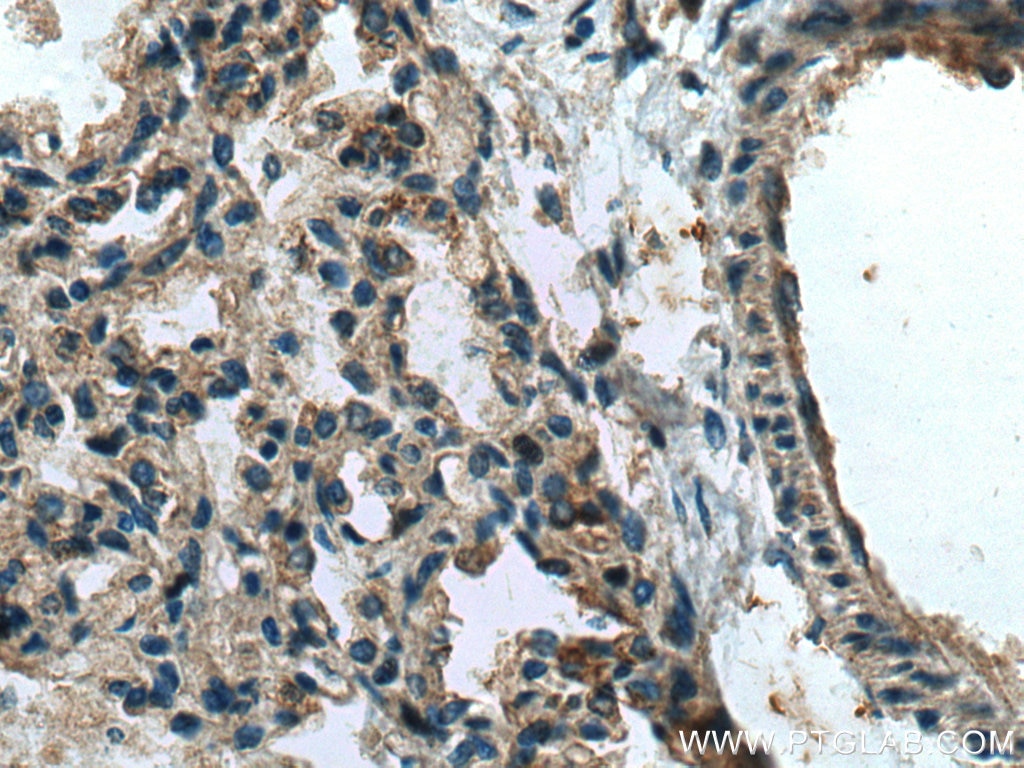Validation Data Gallery
This product is currently not available for sale.
Tested Applications
Recommended dilution
| Application | Dilution |
|---|---|
| It is recommended that this reagent should be titrated in each testing system to obtain optimal results. | |
Product Information
10108-2-PBS targets CX3CL1 in WB, IHC, Indirect ELISA applications and shows reactivity with human samples.
| Tested Reactivity | human |
| Host / Isotype | Rabbit / IgG |
| Class | Polyclonal |
| Type | Antibody |
| Immunogen | CX3CL1 fusion protein Ag0161 相同性解析による交差性が予測される生物種 |
| Full Name | chemokine (C-X3-C motif) ligand 1 |
| Calculated molecular weight | 42 kDa |
| Observed molecular weight | 90-100 kDa |
| GenBank accession number | BC001163 |
| Gene Symbol | CX3CL1 |
| Gene ID (NCBI) | 6376 |
| RRID | AB_2087154 |
| Conjugate | Unconjugated |
| Form | Liquid |
| Purification Method | Antigen affinity purification |
| UNIPROT ID | P78423 |
| Storage Buffer | PBS only , pH 7.3 |
| Storage Conditions | Store at -80°C. |
Background Information
Chemokines direct the trafficking of white blood cells in immune surveillance, playing a key role in inflammatory and infectious diseases such as AIDS. The human CX3C chemokine carries the chemokine domain on top of an extended mucin-like stalk. CX3CL1 is synthesized as a 50-75 kDa precursor and undergoes glycosylation to yield two mature forms: a 100 kDa cell membrane bound form and an 85 kDa soluble form which is released from the cell surface. The soluble CX3C chemokine has potent chemoattractant activity for T cells and monocytes, and the cell-surface-bound protein, which is induced by primary proinflammatory signals in activated primary endothelial cells, promotes strong adhesion of those leukocytes.
